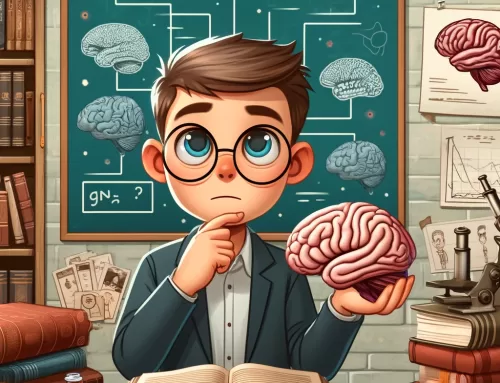With decades of data and new research supporting its effectiveness, practitioners are embracing hypnosis to treat certain conditions.
Years ago, as a psychology grad student, Amanda Barnier, PhD, did a pair of experiments in which she gave people a pile of stamped postcards and asked them to send her one each day for the next few months. She asked a group of people to mail the cards as a favor to her; for another group, she administered a posthypnotic suggestion to send the cards. Both groups were equally likely to mail the cards, day after day, until their stacks ran out. But their motivations and experiences, she found, were quite different (Psychological Science, Vol. 9, No. 4, 1998). The people she asked to do her a favor had an internal explanation for the action. “They felt they made a decision to comply with my social request,” said Barnier, now professor of cognitive science and pro vice-chancellor of research performance and development at Macquarie University in Australia. “The hypnotized people felt it was a compelling urge they had to meet. Hypnosis made the action feel more involuntary.”
That reduced sense of personal agency may be precisely what makes clinical hypnosis such a powerful tool in psychotherapy and behavior change, said Barnier, who has studied the power of hypnosis ever since. “By changing the person’s sense of authorship, the effort becomes external to them. Hypnosis kick-starts the process by making it easier to change.”
Hypnosis is as old as the field of psychotherapy itself, but today, advocates pointing to its evidence base say it deserves a fresh look—and a much wider audience. “Hypnosis has a certain historical mystique that can sometimes make it difficult for practitioners to understand its modern relevance,” said David Godot, PsyD, a clinical psychologist in Long Beach, California, and president of APA’s Division 30 (Society of Psychological Hypnosis). In fact, clinical hypnosis has clear benefits in psychotherapy, improving outcomes in areas such as pain management, anxiety, depression, sleep, and more. “Over the past few decades, there have been tremendous advances in understanding hypnosis and its benefit for research and practice,” Godot said.
Related: Hypnosis training and certifications
Hypnosis combinations
Research suggests that hypnotic suggestion may be useful for a host of other behavioral health problems, including improving sleep, managing stress, and quitting d. One meta-analysis found, for instance, that hypnosis was a promising treatment for sleep problems (Chamine, I., et al., Journal of Clinical Sleep Medicine, Vol. 14, No. 2, 2018). And a meta-analysis of hypnosis for depression found that hypnosis appears to be an excellent treatment option for depression (Milling, L. S., et al., American Journal of Clinical Hypnosis, Vol. 61, No. 3, 2019).
Yet hypnosis is not a therapy in itself, Elkins and other clinicians stress. “Hypnosis is not a primary intervention. But it’s clear it has an important role to play as an adjunctive approach to psychotherapy,” Elkins said. And incorporating hypnosis into psychotherapeutic interventions might boost their benefit.
Research dating back 3 decades found that hypnosis could enhance the effectiveness of cognitive behavioral therapy (CBT). An updated meta-analysis showed that when the two were combined, they had a small-to-medium, but statistically significant, advantage over CBT alone for managing depression or pain (Ramondo, N., et al, International Journal of Clinical and Experimental Hypnosis, Vol. 69, No. 2, 2021). Another analysis found that hypnosis was more effective in reducing anxiety when combined with other psychological interventions than when it was used alone (Valentine, K. E., et al., International Journal of Clinical and Experimental Hypnosis, Vol. 67, No. 3, 2019).
Dialing down pain
Some of the most robust evidence for clinical hypnosis is in controlling pain, as evidenced by two recent meta-analyses. The first assessed 85 controlled studies of experimentally evoked pain and found hypnosis delivered meaningful pain relief for most people, with the greatest effects in those who rated high on hypnotic suggestibility (Thompson, T., et al., Neuroscience & Biobehavioral Reviews, Vol. 99, 2019). In a separate analysis, researchers assessed 42 controlled studies of hypnosis for treating clinical pain. They concluded that hypnosis is “very efficacious,” with a mean weighted effect size in the medium range (Milling, L. S., et al., International Journal of Clinical and Experimental Hypnosis, Vol. 69, No. 3, 2021).
“Hypnosis can help turn down the volume on pain, both acute and chronic,” Montgomery said. In his work with cancer patients, he has demonstrated its benefit in a series of clinical trials—including a forthcoming study suggesting that hypnosis could reduce the joint pain that is a common side effect of a drug used to treat breast cancer. His program has funding from the National Cancer Institute to provide free training to any cancer care providers who want to learn hypnosis to help patients manage pain.
“Hypnosis works. And the cool thing is that in our randomized trials, we don’t find effects due to race or ethnicity. This is something that can help anybody,” said Montgomery.
Hypnosis in the brain
While researchers continue to build the evidence base for hypnosis, they’re also exploring what hypnosis can reveal about the brain. The picture that is emerging is complicated. Neuroimaging studies have found little consensus in pinpointing brain regions and networks involved in hypnotic states and suggestions. That makes sense considering the varied nature of hypnosis, said Devin Terhune, PhD, a cognitive neuroscientist at King’s College London. “If you look across the literature, some studies use hypnosis to induce visual hallucinations, others to modulate pain or memory. Given these very different phenomena, it’s not that surprising that we don’t find a single brain region or network involved in hypnotic suggestion,” he said.
Yet patterns are emerging. In a comprehensive review of the literature, Raz and colleagues found three key networks associated with hypnotizable and hypnotic response: the central executive network, the salience network, and the default mode network, which is associated with internal attention and mind-wandering. They also found involvement of the lingual gyrus, a region that plays a role in mental imagery (Landry, M., et al., Neuroscience & Biobehavioral Reviews, Vol. 81, Part A, 2017).
The involvement of the default mode network makes sense with people’s experiences of hypnosis, said Michael Lifshitz, PhD, an assistant professor of psychiatry at McGill University and a coauthor of the review. “This network is really active when people are daydreaming. It’s as if they’re rehearsing their habitual thoughts about their place in the world. But activity in the default mode network seems to go down in hypnotic states,” he explained. “It’s almost as if you’re letting your usual ways of making sense of the world relax and soften, making space for something new to emerge.”
To dig deeper into the neurocognitive mechanisms of hypnosis, Faerman and Spiegel explored the link between hypnotizability and perseveration, the tendency to apply previously learned rules to new information, even when presented with a new and better rule. Perseveration can be thought of as a marker of cognitive inflexibility, and it draws on the same executive and salience networks implicated in hypnosis. They found people who are higher in hypnotizability tend to be lower on perseveration, more easily adopting new information that overrides previous knowledge. In other words, those who are more responsive to hypnotic suggestions appear to have more cognitive flexibility. Hypnotizability, they conclude, may share common cognitive mechanisms with evaluating errors and implementing logical rules (Scientific Reports, Vol. 11, No. 5704, 2021).
But Terhune has found being highly hypnotizable could be “a double-edged sword.” His research uncovered a link between hypnotic suggestibility and higher rates of dissociative problems like functional neurological disorders and posttraumatic stress disorder (Neuroscience & Biobehavioral Reviews, Vol. 139, 2022). “These seem to be individuals who have a capacity to modulate their awareness and perception in response to verbal suggestion. But because their subjective experience is so malleable, they may be more at risk of developing dissociative disorders in response to traumatic episodes,” Terhune said.
Much more work needs to be done to understand how hypnosis works, and for whom. But there are good reasons to press on. “If we can better understand how hypnosis works, we can actually design interventions to improve it or provide it in a more efficient way,” Faerman said. In a study forthcoming in Nature Mental Health, Faerman, Spiegel, and colleagues applied transcranial magnetic stimulation (TMS) to targeted brain regions in people with the central pain disorder fibromyalgia. Their goal was to inhibit the executive network and increase its functional connectivity with the salience network, mimicking the patterns seen in highly hypnotizable people.
The group that received TMS had significant increases in hypnotizability that were not seen in the group that received a sham TMS. The next step will be to see whether such an intervention may increase their response to hypnosis treatment, such as one designed to reduce pain. “This is just a proof of concept,” Faerman said. “But my vision for the future is that someday, a person can come in before their psychotherapy appointment to get a quick TMS session that will increase the effectiveness of hypnosis and improve treatment outcomes.”
Experts are also looking for ways to expand the reach of hypnotherapy. Spiegel has developed an app called Reveri to deliver hypnosis outside the clinic, for indications including improving sleep, managing pain, and reducing stress. Elkins is advising Mindset Health, which has developed the hypnotherapy app Finito for quitting smoking, Evia for managing symptoms of menopause, and Nerva for irritable bowel syndrome.
As these apps make hypnosis more accessible to the public, advocates say more psychotherapists should consider adding hypnosis to their own clinical skills. “Hypnosis is a loaded term, and people in professional settings are sometimes uncomfortable with it because of its association with entertainment,” Faerman said. “But not learning about it is a mistake for clinical psychology. This is a tool that can improve the lives of our patients in a safe and evidence-based way.”
Additional resources
Evidence-based practice in clinical hypnosis
Milling, L. S. (Ed.) APA, 2023
Handbook of medical and psychological hypnosis: Foundations, applications, and professional issues
Elkins, G. R. (Ed.) Springer Publishing, 2016
APA Division 30: Society of Psychological Hypnosis




